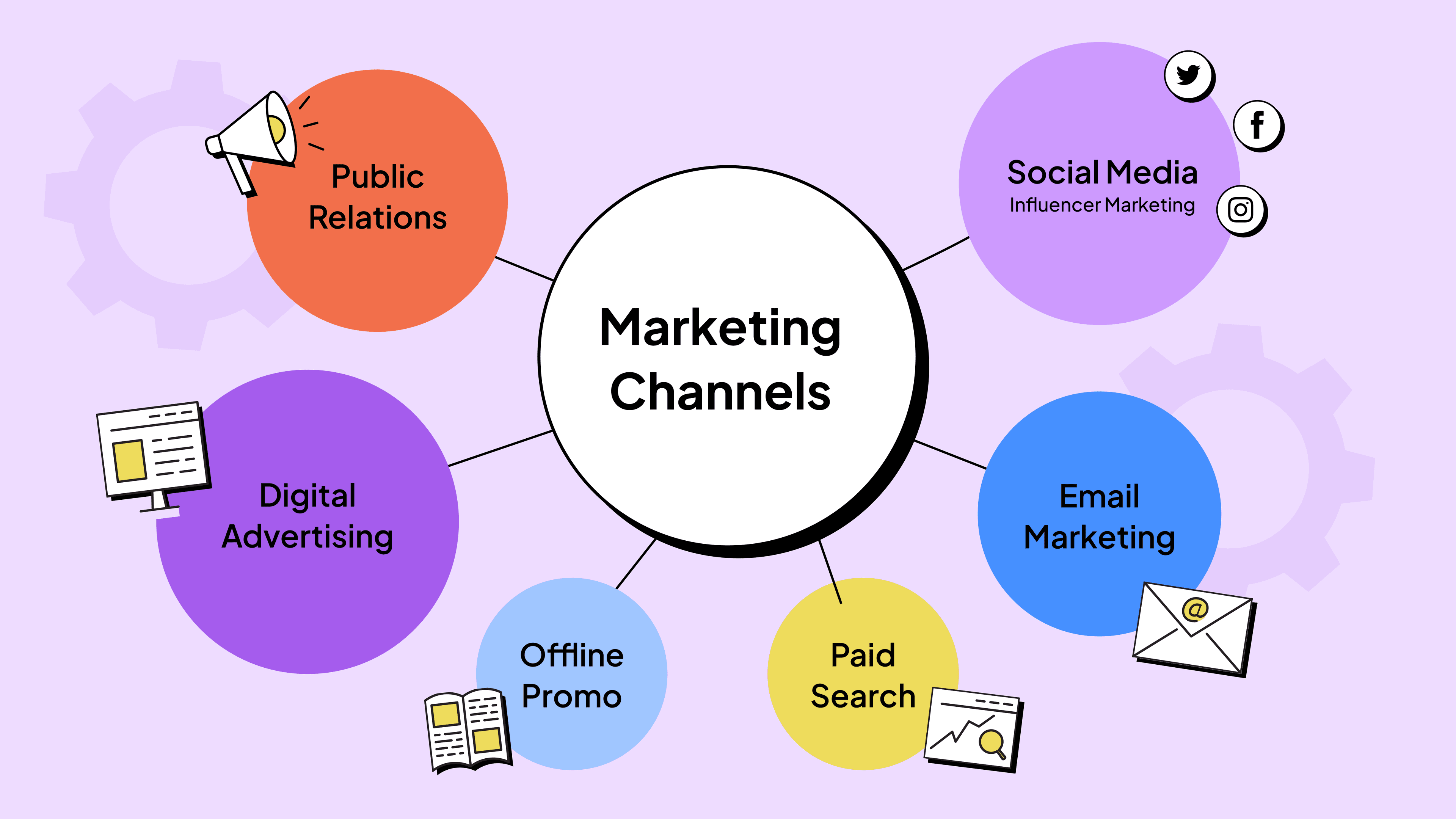Building a Sales Playbook: Must-Have Components

We all know that sales can be tricky. That's why having a solid sales playbook is a game-changer for any business. It's like having a trusty guide that helps our sales team navigate the ups and downs of the sales process. A well-crafted sales playbook doesn't just boost our team's confidence; it also streamlines our sales funnel and makes our sales training more effective.
In this article, we'll dive into the world of sales playbooks and explore why they're so important. We'll break down the key components that make a playbook truly useful, from crafting compelling sales messaging to developing winning strategies. Plus, we'll look at essential sales tools and resources that can take our sales game to the next level. By the end, you'll have a clear picture of how to build a sales playbook that works for your team and helps handle those tricky objections like a pro.
What is a Sales Playbook?
Definition
A sales playbook is our go-to guide that outlines all the strategies, best practices, and techniques our sales team needs to win and keep customers . It's like having a handy manual that details our entire selling process. Think of it as a comprehensive document that houses all the information a salesperson needs to take a sale from quote to close .
Our playbook covers a wide range of topics. We include an overview of our company, detailed information about our sales process, guidance on using our CRM, product offerings, each product's unique selling points, customer personas, competitor analysis, messaging templates, resources, key performance indicators, and even dynamic guided flows .
Purpose
The main goal of our sales playbook is to take the guesswork out of selling . It's designed to guide our reps through any scenario they might encounter across sales cycles, industry factors, specific buyer journeys, and unique pain points of consumers .
One key element we've integrated into our playbook is our configure-price-quote (CPQ) software. This nifty tool helps speed up deals by quickly producing price quotes based on the right product configurations for each customer . By including CPQ solutions in our playbook, we've created a workflow that drives scalable and predictable results.
Benefits
Having a well-crafted sales playbook brings a ton of benefits to our team. Here are some of the key advantages:
- Unified Sales Team: Our playbook helps create alignment across the sales team. By having all our content, strategies, training, and best practices in one place, every rep has access to the right messaging, outreach strategies, discovery questions, and objection-handling techniques. This creates a unified buying experience for all our customers .
- Improved Performance: We've found that our playbook helps turn low performers into top performers. We've added sales call recordings and best practices from our star sellers into our sales plays. This way, all team members know exactly what to do when it comes to closing deals .
- Easier Training and Onboarding: Our playbook has become a fantastic tool for training, onboarding, and coaching. We've packaged all these processes into one place, which empowers new hires at every level and encourages behaviors that allow reps to effectively engage buyers at any stage in the sales cycle .
- Time-Saving: By centralizing our processes, methodologies, and resources into one cohesive document, we've saved our team a lot of time . Our sales personnel don't have to rely on their memory or outdated spreadsheets to recommend the appropriate product or bundle to a buyer .
- Better Customer Experience: With easy access to practical resources, our team is better equipped to provide buyers with tailored solutions . When a salesperson answers the guided questions set up in our playbook, our CPQ solution provides the best recommendation in moments instead of hours .
- Streamlined Processes: Integrating our CPQ solution into the playbook has streamlined our sales process, reduced lead times and sales cycles, and improved efficiency for all stakeholders . Lead qualification, pitches, and sales quotes have become automated processes rather than time-consuming team training needs .
- Efficient Metric Tracking: Using CPQ, our sales team has an efficient and reliable method for tracking sales metrics .
By leveraging our sales playbook, we've been able to boost our team's productivity, improve our win rates, and drive revenue growth for our company . It's become an essential tool in our sales arsenal, helping us navigate the complex world of sales with confidence and consistency.
Key Components of an Effective Sales Playbook
We've found that a well-crafted sales playbook is essential for our team's success. It's the go-to guide that helps us navigate the sales process smoothly and consistently. Let's dive into the key components that make our playbook truly effective.
Company Overview
We always start our playbook with a clear picture of who we are and what we're all about. This section is super helpful, especially for our new team members. We include:
- Our company's history and what we offer
- Our mission and values
- How our sales strategy fits into the bigger business picture
- An organizational chart showing who's who
This overview helps our sales team understand where they fit in and who to turn to when they need help. It's like a roadmap of our company, making sure everyone's on the same page .
Sales Process
Next up, we break down our sales process step by step. This is a big chunk of our playbook, and for good reason. It covers everything from how we first reach out to potential customers to how we close the deal. We make sure to include:
- A clear outline of each stage in our sales cycle
- The milestones we aim for at each stage
- Who's responsible for what during the process
By laying this out clearly, our team knows exactly what to do at every point of the sales journey. It takes the guesswork out of selling and helps us be more efficient .
Buyer Personas
Understanding our customers is crucial, so we dedicate a whole section to buyer personas. These are like detailed profiles of our ideal customers. For each persona, we include:
- Demographics (age, gender, location, job title)
- Their main challenges and pain points
- What motivates them to make a purchase
- Common objections they might have (and how to address them)
- The kind of messaging that resonates with them
We gather this info from various sources like sales interactions, customer interviews, and analytics data. Having these personas helps us tailor our approach to each prospect, making our pitches more relevant and effective .
Product Information
Last but not least, we make sure our playbook has all the nitty-gritty details about what we're selling. This section is packed with info about our products or services, including:
- How they work and what they do
- Why customers should care about them
- Our pricing structure
- What makes our offerings unique in the market
We also include any product documentation or guides that might be helpful. This way, our sales team has all the info they need to answer customer questions confidently and highlight the benefits that matter most to each prospect .
By including these key components in our sales playbook, we've created a powerful tool that keeps our team aligned, informed, and ready to tackle any sales situation. It's not just a document; it's the backbone of our sales strategy, helping us close deals more effectively and consistently.
Creating Your Sales Messaging and Positioning
We know that crafting the right sales messaging and positioning is crucial for our sales playbook. It's all about making our offering stand out and resonate with our potential customers. Let's break this down into three key areas: our value proposition, elevator pitch, and competitive differentiation.
Value Proposition
Our value proposition is the heart of our sales messaging. It's a clear statement that explains how our product or service solves our customers' problems better than anyone else . When we're developing our value proposition, we need to put ourselves in our prospects' shoes. We should ask ourselves: What problem does our product solve? How does it improve their business?
To create a compelling value proposition, we need to:
- Keep it concise: Aim for one to three sentences that pack a punch.
- Make it specific: Address our prospects' needs directly.
- Evoke emotion: We want our potential clients to feel excited about finding a solution to their problems .
It's also important to consider our ideal customer profile and buyer personas when crafting our value proposition . This helps us tailor our message to the right audience.
Elevator Pitch
Our elevator pitch is our quick, memorable description of what we do and sell. It's not about closing a deal on the spot – it's about sparking interest and earning more of our prospect's time and attention .
Here's what we should include in our elevator pitch:
- A compelling opening: Hook them with a unique statement.
- Problem and solution: Briefly introduce a challenge and highlight our solution.
- Unique value: Share why our approach stands out.
- Evidence of success: Mention a quick success story or achievement.
- Call to action: Invite them to continue the conversation .
Remember, we want to keep our elevator pitch short and sweet – about 30 seconds to two minutes . The goal is to pique curiosity and leave them wanting to learn more.
Competitive Differentiation
To stand out in a crowded market, we need to focus on what makes us unique. This is where competitive differentiation comes into play. It's not just about showing that our product is better – we need to show how it's different .
Here are three types of differentiators we can use:
- Unique differentiators: These are features or benefits that only we offer. They're great if we have them, but they're often short-lived .
- Comparative differentiators: These are aspects of our product or service that are better or different from our competition. We can use these to create "traps" for our sales team to leverage .
- Holistic differentiators: These go beyond the product and focus on building trust in our company. They might include things like financial stability, growth, or commitment to causes that resonate with our customers .
When developing our competitive differentiation, we need to remember that customers don't buy features – they buy solved problems . So, let's focus on translating our features into benefits that address our customers' pain points.
By crafting a strong value proposition, nailing our elevator pitch, and highlighting our competitive differentiation, we're setting ourselves up for success. These elements will help our sales team communicate our value effectively and stand out in a crowded marketplace. Remember, it's all about understanding our customers' needs and showing how we're uniquely positioned to meet them.
Developing Sales Plays and Strategies
We know that creating effective sales plays and strategies is crucial for our sales playbook. Let's dive into some key areas that'll help us boost our closing rates and hit our targets.
Prospecting Techniques
Prospecting is the first step in our sales process, and it's essential we get it right. We've found that a mix of modern techniques works best for finding and engaging leads. Here are some strategies we've had success with:
- Warm Calls: We always try to warm up our prospects before making initial contact. This could be through a shared connection or by engaging with their content on social media .
- Thought Leadership: By establishing ourselves as experts in our industry, we build credibility and trust before reaching out. We do this through blogging, guest articles, and speaking at industry events .
- Social Media Engagement: We spend time on platforms like LinkedIn and Twitter, answering questions and sharing relevant content. This social selling approach has shown great results - companies using these practices are 40% more likely to hit their revenue goals .
- Webinars: Hosting webinars is a great way to source leads who have a demonstrated interest in our topic. We always follow up with attendees within 24 hours to keep the momentum going .
- Referrals: We never forget to ask our happy customers for referrals. It's one of our most reliable prospecting methods .
Remember, prospecting isn't about selling right away. We focus on building relationships and being a trusted resource for our prospects .
Objection Handling
Objections are a natural part of the sales process, but they can be a significant roadblock if we don't handle them well. Here's how we approach objection handling:
- Listen Actively: We make sure to really hear what our prospects are saying. This shows we care about their concerns .
- Acknowledge and Empathize: We always validate our prospect's concerns. This builds trust and opens the door for further conversation .
- Explore Deeper: We ask open-ended questions to understand the root of their objections. This helps us address the real issues .
- Respond with Solutions: Only after we fully understand the objection do we offer a recommendation or solution .
We've found that the LAER framework (Listen, Acknowledge, Explore, Respond) is particularly effective for handling objections .
Closing Techniques
Closing is where the rubber meets the road in sales. Here are some techniques we've found effective:
- Assumption Close: We sometimes assume the prospect is ready to buy, asking questions like "Is this the type of product you were looking for?" .
- Alternative Close: If a prospect seems unsure about a particular option, we offer an alternative that might better suit their needs .
- Creating Urgency: We might mention a limited-time offer to encourage quicker decision-making .
- Summary Close: As we reach the end of our conversation, we summarize the key points we've discussed .
- Empathy Close: We always aim to show we understand the prospect's situation and needs .
Remember, the goal isn't just to close the deal, but to ensure our solution truly meets the customer's needs. This approach builds long-term relationships and leads to more referrals down the line.
By incorporating these sales plays and strategies into our playbook, we're setting ourselves up for success. We're not just selling a product; we're providing solutions and building lasting relationships with our customers.
Sales Tools and Resources
In our sales playbook, we've found that having the right tools and resources can make a world of difference. Let's dive into some key areas that help us stay organized, informed, and effective.
CRM Integration
We've learned that a good Customer Relationship Management (CRM) system is the backbone of our sales process. It's not just about storing contact information; it's about streamlining our entire workflow. We use Pipedrive, which has been a game-changer for us. It allows us to connect to over 400 services and tools with just one click . This integration capability means we can build a tech stack that truly works for us.
But it's not just about having the tools; it's about using them effectively. In our playbook, we make sure to go beyond just introducing each tool. We focus on how to use the right tools at the right time to move deals forward . This approach helps our team understand when and how to leverage each part of our tech stack for maximum impact.
We've also found it helpful to show our sales reps how our CRM integrates with other organization-wide data. For instance, we explain how our system captures information from customer service interactions and marketing campaigns . This big-picture data helps inform our sales approach and gives us a more holistic view of each customer.
Content Library
A well-organized content library has been crucial for our sales team's success. It's like having a secret weapon that helps us respond quickly and accurately to customer queries. We've set up our library to include a mix of internal and external documents, making it easy to find the correct answers quickly .
One of the key benefits we've seen is that it allows us to engage our Subject Matter Experts (SMEs) earlier in the process. Instead of starting from scratch each time, we can simply ask them to update existing RFP answers . This saves time and ensures we're always putting our best foot forward.
To keep our library effective, we follow a few key practices:
- We establish clear roles for who can curate, add, and update content .
- We schedule regular review processes to keep our RFP answers up-to-date .
- We comb through sales call recordings for inspiration to give our answers a winning edge .
- We encourage our team to submit FAQs regularly and upvote the best responses .
By maintaining our content library, we've seen a significant improvement in our ability to respond quickly and effectively to customer inquiries.
Analytics and Reporting
We've found that sales analytics software is a powerful tool in our arsenal. It automatically gathers all types of sales data and transforms it into important metrics related to our sales process . This AI-powered technology synthesizes these metrics into easy-to-read reports, allowing us to quickly identify areas that can be improved .
One of the key benefits we've seen is the ability to make more informed decisions. By tracking crucial performance metrics, we can illuminate the areas of our sales performance most in need of improvement . For instance, we keep a close eye on our win rate (the number of deals won divided by the number of deals created) to measure the effectiveness of our sales processes .
We also use analytics for sales forecasting. These tools analyze past and present data to predict the future, projecting our run rate and net sales for given time periods . This helps us stay on track to reach our goals and make spending decisions with confidence .
By leveraging these tools and resources effectively, we've been able to streamline our sales process, improve our decision-making, and ultimately, close more deals. Remember, it's not just about having these tools; it's about using them strategically to support and enhance our sales efforts.
Conclusion
Building a comprehensive sales playbook has a profound impact on a sales team's success. By incorporating key components like a clear company overview, well-defined sales process, detailed buyer personas, and thorough product information, we equip our sales reps with the tools they need to excel. This guide serves as a roadmap, helping our team navigate complex sales scenarios with confidence and consistency.
To wrap up, a well-crafted sales playbook is more than just a document - it's a dynamic resource that evolves with our business. By regularly updating our playbook with new strategies, tools, and insights, we ensure our sales team stays ahead of the curve. Remember, the goal isn't just to close deals, but to build lasting relationships with our customers, driving long-term success for our company.
FAQs
What components are essential in a sales playbook?A sales playbook should comprehensively cover various aspects including company information, product details and pricing, commission structures, a defined sales methodology, a clear sales process, a guide on creating effective sales strategies, identification of target personas, and specific sales plays.
What are the critical elements needed in a sales playbook?A sales playbook should ideally include the company's vision, purpose, mission, and values, strategies, goals, key performance indicators (KPIs), and tactics. It should also outline the leadership and organizational structure, people operations, and the employee lifecycle.
Can you outline the fundamental elements of a business playbook?The fundamental elements of any business playbook include the company profile, detailing the organization's identity and history; personnel information, specifying roles and responsibilities; policies that need to be known; and processes that provide step-by-step guides on operations.
What are the advantages of implementing a sales playbook?A sales playbook aids in tracking and analyzing key performance indicators (KPIs), allowing for the quick identification of improvement areas. It helps measure the effectiveness of various strategies and supports informed decision-making to enhance the sales process.



